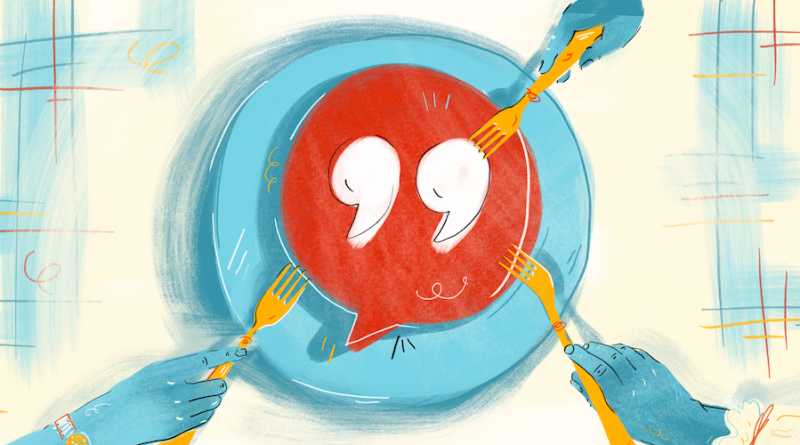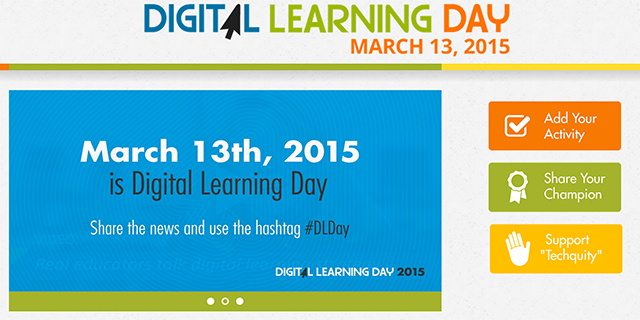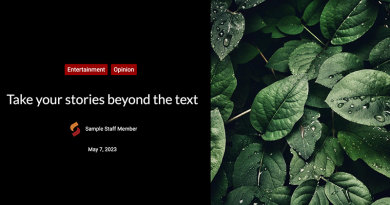‘Great Thanksgiving Listen’ provides unique interviewing opportunity, practice

Listening and storytelling are critical skills, especially for student journalists.
After all, storytelling is the basis of human communication. It’s through narratives that we develop our identities, make sense of complex concepts, and socially construct our realities to create communities filled with interpersonal ties that are the foundation of social capital.
Often, family and personal stories are shared orally and passed down from generation to generation, but that doesn’t ensure the information will continue to live on. Over time, stories get left out, and, eventually, they are forgotten.
However, these important historical artifacts don’t have to be lost. They can be preserved in a more permanent form. They can be submitted to the Library of Congress in Washington D.C. and become accessible for the rest of time

The easiest way to accomplish this is to take part in “The Great Thanksgiving Listen” (TGTL) hosted by StoryCorps, which is a non-profit organization that aims “to remind one another of our shared humanity, to strengthen and build the connections between people, to teach the value of listening, and to weave into the fabric of our culture the understanding that everyone’s story matters.”
Specifically, TGTL is a project that collects oral histories of anyone who is willing to be interviewed and recorded, such as family members, friends, mentors, or just people we admire. This is done by using the StoryCorps application for smartphones and tablets or StoryCorps Connect, which works with video conferencing software.
Once the recording is made and all the other necessary steps of signing releases and taking pictures are completed, the interview gets saved to the StoryCorps Archive at the American Folklife Center housed within the Library of Congress.
Thanksgiving presents the perfect occasion to do this type of work because typically we are already around the people we would want to hear from, and StoryCorps provides interview questions and other helpful resources if you are worried about how to record a solid history.
These support materials make it easy to incorporate TGTL into the classroom, so doing so just makes sense.
Besides the inherent use of technology, this project provides important value to students through interviewing practice.
In a time when so many students seem to prefer texting or Snapchatting a person to “interview” them for their student publications, TGTL pushed students outside of their comfort zones to not only talk with individuals in-person but to also talk to adults, which is something they may not be accustomed to doing within their student-media work.
The benefit of using TGTL is that interview questions are provided. This creates a safety net for the students, allowing them to hone in on the process of interviewing as a way to elicit stories.
Also, it encourages students to create content via a different process and for a different audience than they normally do.
By creating an oral history that doesn’t allow for editing, they have to be more methodical in their interviewing, following a more structured plan to ensure the final recording results in a cohesive narrative that tells the interviewee’s story. This breaks from the typical types of content most student journalists create.
Also, the audience is broader. Instead of crafting a story for their peers and localized community, they are producing content for a national audience that potentially spans generations. Of course, online content student journalists create can be read by anyone with an internet connection, but the target audience still remains close to home. With TGTL, that target audience expands exponentially, and it is important for students to understand both how their work can be consumed on a larger scale and that they are part of a wider world and society.
From the educator’s perspective, TGTL benefits teachers by delivering a pre-packaged and prepared project.
The StoryCorps website presents a plethora of information regarding how to implement TGTL in a classroom setting, including Common Core Standards and Alignment. As a one-stop shop, I appreciate the Educator Toolkit, which is a PDF of all the information.
Using that document, I incorporate TGTL into my courses. In different semesters, I have made it a required assignment. I’ve had mixed results in terms of the quality of work that gets completed in those situations, so this year, I am offering it as an extra credit opportunity.
The students will have to do all the steps to be eligible for the credit, which include submitting the recording to the StoryCorps archive, turning in a link to the submitted recording, providing me with a list of the interview questions they used, and creating a transcript of the interview.
Once they turn all of the in through our Learning Management System (LMS), I award them points on an all-or-nothing basis, so if they did everything and it sounds relatively good, they get all the points I was willing to award as extra credit.
The number of points such an extra credit opportunity is worth usually is derived from a percentage of the overall points available for the entire course. I want it to be worth enough that it is enticing to complete, but I also don’t want it to be worth so much that it gives the students permission to blow off other assignments.
Prior to turning them loose on the project, I spend a class period discussing TGTL, leaning on the provided lesson plans, but I put a heavy emphasis on the ideas of interviewing and storytelling.
I also stress why this type of project, which doesn’t have to be done only as part of TGTL, is important.
If the last two years and a global pandemic have taught us anything, nothing is guaranteed, and time is fleeting, meaning we have to collect society’s historical artifacts at every opportunity to ensure future generations can understand the lives of those who came before them.
Above all, though, everyone has a story to tell, and everyone is worthy of telling their story.
As journalists, we must capture those stories so they don’t get lost and forgotten with the passage of time.
It’s our duty.
During the Thanksgiving season, when many reflect on and take stock of what they have in their lives, journalists need to be grateful for the rights granted to them via the First Amendment, and they should honor those privileges by responsibly telling the stories of others.




